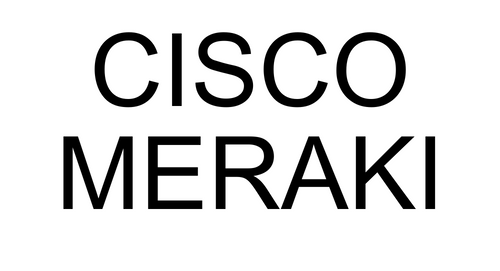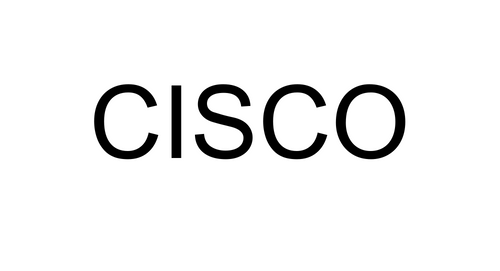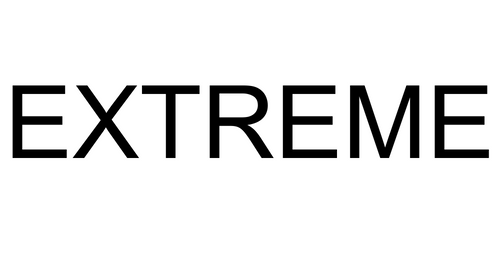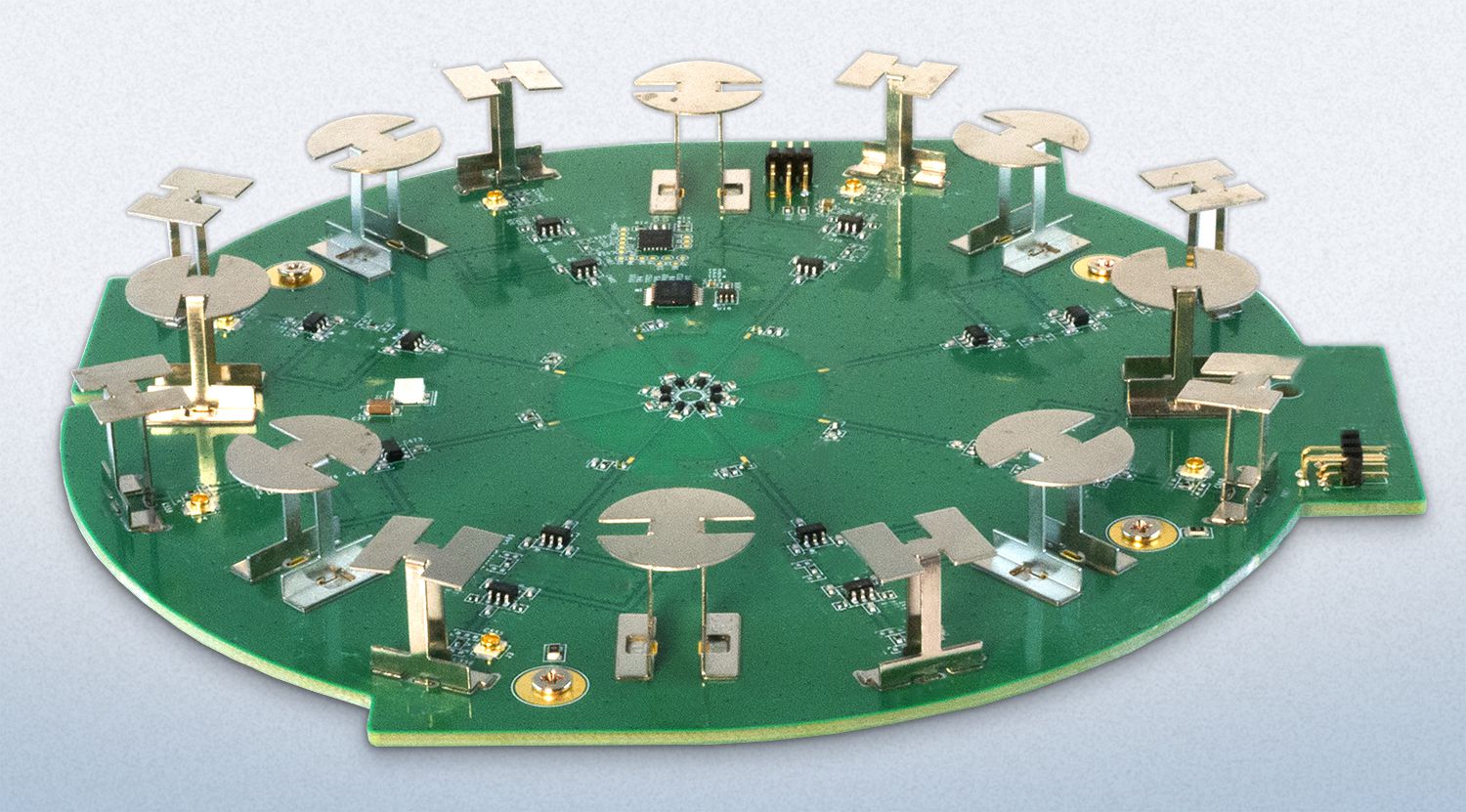The Mist platform is built on a modern microservices cloud architecture for elastic scale and agility. An inline AI engine delivers unprecedented insight and automation. Virtual Bluetooth® LE enables personalized location services with ease and scale.
It’s time to retire your controllers and first generation cloud WLAN solutions.
Mist Came at the Right Time.
Top Architecture Differences
Mist is a massively scalable, distributed software architecture built with modern cloud tools.
First generation cloud solutions are made up of virtual controllers in distributed datacenters.
Mist virtualizes the indoor experience with machine learning, virtual beacons, and patented antenna technology.
Others rely on battery beacons for Bluetooth® LE location.
Feature Comparison
|
Compare

|
Compare

|
Compare

|
Compare

|
Compare

|
|
|---|---|---|---|---|---|
| Essential Wireless Features | |||||
| Installation |
Mist Installation App (IOS and Android)
- Easy to scan QR Code, claim AP and place on site & map - can take "top of ladder" pictures that will remain in AP record if there are building changes down the road Auto Provisioning - plug in an AP and automatic - Site assignment - Dynamic Profile Assignment - AP Name Generation Speeds up installation over 5x |
App just for monitoring, no installation help
|
Basic App, many clicks hard to use
|
Basic App, very clunky
|
ExtremeCloud IQ companion, medium class App with inventory, location , basic visibility and summaries.
|
| Essential Wireless Features Day 1 | |||||
| Fast AP Boot |
APs boot under 20 seconds
|
—
~1 minute
|
—
Several minutes
|
—
Several minutes
|
—
Several minutes.
|
| Automation & Optimization |
AI for AX to automate and optimize Wi-Fi 6 network settings
|
- Lack of AI intelligence
- Manual, static configuration of features - Some basic automation - usually generating alerts |
- Lack of AI intelligence
- Manual, static configuration of features - All development done in AOS 10 when almost all customers on AOS 8 and the transition is very manual |
- Lack of AI intelligence
- Manual, static configuration of features |
No AI for optimization.
|
| Inline Microsegmentation |
WxLAN classifies IoT/headless devices and segments by policy
|
Stateful firewall in AP with device/app - need MX for full functionality
|
Stateful firewall in controller. IoT classification requires ClearPass $$$
|
Requires ISE
|
Combination of several elements from Extreme Networks to provide micro segmentation.
Needs extra licenses. Need extra equipment and/or software. Containers supported on AP. |
| Essential Wireless Features Day 2 | |||||
| Personal WLAN (private user groups) |
|
Shared PSK or requires one SSID per group
|
- Requires ClearPass $$$ for user/role segmentation
- Shared PSK (24) |
- Requires ISE $$$ for user/role segmentation
- Shared PSK |
Controller allows user/role segmentation. Limited.
- Shared PSK. - PPSK supported, Unable to find maximum supported keys. |
| AI-Driven RF Optimization (RRM) |
Based on reinforcement learning:
- Optimizes channel/power with AI-based reinforcement learning - AI continuously maximizes User experience (SLE) and minimizes interference in real-time - Adapts dynamically on an ongoing basis while network under load learning from client experience - Learns and deprioritized triggered DFS channels to boost network uptime - Coverage SLE is an ongoing 'Site Survey' |
Basic RRM
- will monitor DFS failure patterns - AP's remember their settings through power failures - Won't make changes in 'busy hours' |
ARM - Basic pattern recognition for comparing and optimizing low-level RF settings only across managed sites:
- Not a true AI solution: doesn’t leverage reinforcement learning to improve over time - Doesn’t adjust RF to maximize user experience - Analyzes periodical and static data for daily but not ongoing dynamic updates - Requires Controller and Mobility Master for AirMatch RF optimization - Requires data collector appliances and NetInsight server |
15-year old algorithm
- Based on how APs hear each other - Optimizes channel/power based solely on AP interference graph - RRM is performed on a static, periodic basis when the load is low |
Basic RRM. No AI/ML, requires several days of tuning.
|
| Essential Wired Features | |||||
| Wired Assurance for provisioning and management |
- Measure wired experiences with Service Level Expectations (SLEs)
- Switch templates offered within UI; use CLI for corner cases - Dynamic port config that works with any RADIUS server - Port profiles with manual or dynamic config based on endpoint type |
- Limited insight into wired experience
- Switch templates are only model specific - Dynamic port config only works for Meraki APs - No concept of port profiles; ports much be tagged individually |
- Limited insight into wired experience
- Many features features require CLI templates - Dynamic port config requires Clearpass and Mobility Controller with lock-in architectures - Port profiles require lots of manual config |
- Requires on-premises DNAC
- No UI based templates and CLI is switch model and version specific. Expertise required in template builder - Dynamic port config not supported, but supported in greenfield with Cisco only devices and ISE - No port profiles |
Limited insight into wired experience.
- Many features require CLI templates. - Port profiles very limited configurations - No automatic RMA |
| Telemetry |
API driven and leverages telemetry data from Juniper EX Series Switches to offer anomaly detection and identify when switch health is trending negatively.
|
Mainly WAN Insights
|
Telemetry for wireless, but very limited for wired switching
|
Limited telemetry
|
Telemetry for wireless and limited for wired switching.
|
| Stacking capabilities |
10 member stacking with standards DAC and flexible optics of various lengths up to 960 Gbps
|
8 member stacking
|
10 member stacking
|
8 member Stackwise with proprietary cables and max of 3m length
|
8-member stacking high bandwidth. Can support up to 40KM stacking distance. Different Gbps link supported.
|
| High availability for redundancy |
- Virtual Chassis leads the wiring closet solution with NSSU, GRES, high capacity backplane, etc.
- Juniper switches support redundant hot swappable power supplies and fans - Offers a variety of choices: MC-LAG, ESI-LAG, EVPN-VXLAN |
Only stacking
|
Only offers VSX for distribution
|
Proprietary SD-Access solution and no interoperability with 3rd parties; requires DNA center to orchestrate
|
Yes, virtual chassis SummitStack
|
| Multigigabit |
1/2.5/5/10GbE speeds
|
1/2.5/5/10GbE speeds
|
1/2.5/5/10GbE speeds
|
1/2.5/5/10GbE speeds
|
1/2.5/5/10/40GbE speeds.
|
| Power over Ethernet |
UPoE/PoE/PoE+
|
UPoE/PoE/PoE+
|
Up to 60W
|
UPoE/PoE/PoE+
|
UPoE/PoE/PoE+/UPoE+.
|
| Integrated Network Access Control |
Compatible with 3rd parties such as Forescout, Clearpass, ISE, FreeRadius and other, etc.
|
Only ISE integration
|
Clearpass is compatible with 3rd parties such as Forescout, ISE, Checkpoint, etc.
|
ISE & DNAC does not work with 3rd party
|
Supported Unified Policy management
|
| Security |
- Juniper Connected Security brings visibility and enforcement to every part of the network
- SecIntel leverages EX Switches to quarantine compromise devices and Mist APs to monitor signs of compromise in connected devices - MACSEC256 on select platforms FedRAMP In-Process |
ISE and Stealthwatch. Integration with Open DNS
|
- Clearpass and Policy Enforcement Firewalls (PEFs) deliver enhanced visibility and policy enforcement
- Reliance on partners for integrated security FedRAMP(cert) |
- ISE and Stealthwatch
- Integration with Open DNS |
Radsec.
IPSec TrustSec FedRAMP(cert) |
| Common hardware building blocks |
- A single operating system across the Juniper hardware portfolio
- Common building blocks for WAN, WLAN and wired networks |
One OS but requires complete different set of hardware (MX/MS/MR) from DNA solution - some Catalyst switching
|
Convergence of HP and Aruba switches--new OS-CX runs on specific hardware platforms leading to a mix of operating systems
|
- Multiple non-integrated products that each have their own OS
- Some components can be migrated to the Meraki Cloud (losing features) - Hardware dependencies force upgrades to be DNA ready; Meraki requires a completely different set of hardware |
Different depending on the line. New version of white box like Open switch.
|
| Fabric architectures |
EVPN-VXLAN, GPB, MC-LAG, ESI-LAG, VC supports 10 devices for stacking, microsegmentation
|
- Lacks scale and full stack support for large enterprise without 100G and modular core offerings - some Catalyst switching
- Does not support 3 tier deployment for bigger deployments |
Poor resiliency with limited EVPN-VXLAN capabilities
|
SDA only has support for EVPN-VXLAN (proprietary using LISP)
|
Virtual Chassis for Enterprise
Supported BPG-EVPN Not deep enough visibility on CloudExtreme IQ |
| multi vendor support |
Built on open standard technologies like EVPN-VXLAN and NAC
|
—
Does not support multi vendor
|
On-premises AirWave can do multi vendor, but Cloud Central can not
|
Proprietary protocols
|
Built in with open standards but very limited
|
| Essential Access Features | |||||
| Cloud native NAC |
Juniper Mist Access Assurance provides automatic scaling, service geo-affinity for optimal latency and service redundancy. In addition, periodic hitless feature and security updates to the Access Assurance happen automatically and dot not require a downtime. Customers need not worry about client scale, redundandy, Geographic redundancy and affinity.
|
—
|
Customers need to design and deploy NAC infrastructure depending on the number of client devices, design and deploy NAC and network infrastructure for redundancy, geo affinity. Furthermore, any feature or security update requires downtime planning and manual execution for every server in the cluster.
|
Customers need to design and deploy NAC infrastructure depending on the number of client devices, design and deploy NAC and network infrastructure for redundancy, geo affinity. Furthermore, any feature or security update requires downtime planning and manual execution for every server in the cluster.
|
Customers need to design and deploy NAC infrastructure depending on the number of client devices, design and deploy NAC and network infrastructure for redundancy, geo affinity. Furthermore, any feature or security update requires downtime planning and manual execution for every server in the cluster.
|
| Simplified policy management |
Single page for policy creation and management with unified labels.
|
—
|
Multiple pages in the UI to configure various Service Set elements (enforcement profiles, enforcement policies, roles and role mapping policies, service sets, dictionaries etc). No unified view to see all the policies, understanding and debugging hierarchy is a pain.
|
Multiple pages in the UI to configure various Policy elements (authorization profiles, dictionaries, conditions etc). No unified view to see all the policies, understanding and debugging hierarchy is a pain.
|
Multiple tabs, not a unified view to see all the policies, understanding and debugging hierarchy is a pain.
|
| End-to-end visibility |
Clients even visibility across wired, wireless and NAC. Complete suite from Onboarding sequence of events. Full visibility.
|
—
|
No end-to-end client event visibility and no sequence of events across wired, wireless and NAC. When troubleshooting client connectivity experience issues, customers need to look into debug Access Tracker on ClearPass for authentication failures and troubleshoot network separately in a different product (WLC, Central, Airwave, etc).
|
No end-to-end client event visibility and no sequence of events across wired, wireless and NAC. When troubleshooting client connectivity experience issues, customers need to look into debug Live Logs on ISE for authentication failures and troubleshoot network separately in a different product (WLC, DNAC, etc).
|
Limited end-to-end client connection experience visibility in case of using Extreme Management Center and Extreme Control. Not available inside the Extreme XIQ cloud, no visibility into granular client network connectivity experience like DHCP, ARP, DNS.
|
| AI infused NAC |
Marvis validates each and every user networking experience across wired, wireless, WAN and NAC. Automatically bubbles up issues that have wide impact for admin to take action removing all the noise or highlights persistently failing clients or offenders. Marvis provides easy hierarchical debugging and troubleshooting.
|
—
|
No Conversational interface or hierarchical debugging, Aruba Central AI Insights is nothing more than legacy alerting with all the noise, all troubleshooting process requires manual investigation of a per-client logs in different products like ClearPass or DNAC or WLC etc.
|
No Conversational interface or hierarchical debugging, all troubleshooting process requires manual investigation of a per-client logs in different products like ISE, DNAC or WLC, etc.
|
No Conversational interface or hierarchical debugging, all troubleshooting process requires manual investigation of a per-client logs in either Extreme Management Center or Extreme XIQ Cloud, with limited visibility provided by these logs. Extreme XIQ AI-like features are still in early days and do not provide any substantial benefit.
|
| Architecture | |||||
| Core Design |
- Controller-free modern microservices architecture
- Service containerization - Quick and focused low-risk feature updates - Near real-time bug fixing without network disruption |
- Server (Data Center) based cloud
- Legacy sharded database in hosted database 'cloud' (Containerized) - Virtual controller-based - trying to implement shard based Microservices |
- Aruba ESP is the redesign of Aruba Central (updated Airwave) with Management
- The controller-based architecture has four different clouds - Users must upgrade, maintain and integrate all of the software - Monolithic code bases are expensive to scale and difficult to manage - Limited API support |
- Controller-based legacy monolithic software architecture
- DNA = Lots of hardware & boxes all needing proper versions - Confusing cloud solution if managed by Meraki (a new option) |
- 3rd generation cloud.
- Legacy shared database in hosted database 'cloud'. - Virtual controller-based. - Controller-based legacy monolithic software architecture. - Lack of strong cloud solution. - Lots of hardware and boxes all needing proper versions. |
| Scalability |
- Elastic vertical and horizontal scale
- No expensive hardware required |
Complex and non-elastic
- Virtual controllers (Containers) hosted in co-located data centers - Require separate servers to scale |
- Non-elastic with more gateways/controllers required
- Push to Aruba Central |
- Non-elastic with more controllers required
|
- Complex and non-elastic.
- Virtual controllers hosted in co-located data centers. - Require separate servers and controllers to scale. - On-site controllers stacked. |
| User Interface |
Easy to configure with complete flexibility on what is visible and in what order
|
Good looking dashboard with limited customizability
|
Aruba Central = Airwave with a new wrapper
- Not customizable - Need to "look for things" |
Bulky User Interface
- Non-intuitive - Basic things are hard to find |
Good looking dashboard with limited customizability
|
| Programmability |
- 100% accessible through APIs
- Support for complete IT automation, such as ticketing or web alerts |
Limited set of APIs
- configuration scale is only available via their APIs |
Limited set of APIs
- Main switching portfolio has limited APIs, new ArubaOS-CX based switches with APIs lack features and have minimal customer traction |
- Limited set of APIs
|
APIs portal under ExtremeCloud IQ. No cost
UI not based on APIs Limited set of APIs to input information. Very confusing depending of the type of the controller. Swagger availability. |
| Resiliency |
Microservice containerization
- The failure of one service doesn’t impact others - Network remains running if not connected to cloud |
Redundant virtual controllers
- Microservices implementation is in "infancy" |
Very complex with more hardware required (Controllers, Mobility Masters)
- Each piece of hardware needs proper software versions (compatibility) - Version compatibility matrix a nightmare |
Complex with more hardware required
- Each piece of hardware needs proper software versions - Version compatibility matrix a nightmare - Licensing on top of licensing |
- On Prem with more hardware required.
- Each piece of hardware needs proper software versions. - Version compatibility matrix allows some of the controller, not all. - ExtremeCloud IQ not defined. |
| Agility |
Modern, microservices-based cloud, instead of monolithic code base
- Rapid updates without network disruption |
- Still building Data Centers
- Beginning to use Microservices for specific applications such as 'splash pages' |
Controller Monolithic (brittle) software with poor ability to update for new devices/apps/fixes
- High risk to update Aruba Central - Not Microservices as they have scheduled downtimes that last for hours Aruba Clearpass - Scale by adding more Clearpass Servers |
Cisco DNAC - Monolithic (brittle) software with poor ability to update for new devices/apps/fixes
- Multiple servers that all need right code versions - High risk to update Steep learning curve |
- controllers and hypervisors.
- Slow updates - Microservices architecture. |
| Deployment flexibility and cloud management |
- Scale from the largest to the smallest enterprise businesses for rapid updates
- Single click activation for streamline rollouts - Wired, Wi-Fi and WAN Assurance for full lifecycle management ZTP Configuration across AP, Switch and WAN gateway - Template Driven - Use Site variables to easily customize as needed |
Virtual controllers hosted in co-located data centers
- are you going to monitor catalyst AP's or change the Catalyst AP persona to Meraki and lose many features, and very difficult to move back to DNA Center persona |
- Controller/Gateway for large customers, Aruba Central for small-midsize customers; monolithic architecture
- No hierarchical configuration Offers on-premises and cloud solutions - Offered across different applications - Will offer on-prem Cloud option - very $$$$$ |
- On-premises with no cloud offering for SDA
- Uses a centralized, proprietary controller - are you going to use Meraki to monitor your Catalyst AP's? Why did you buy expensive DNAC |
Microservices co-located data centers.
- Controller/Gateway for large customers, monolithic architecture. - Offers on-premises and cloud solutions. - Offered across different applications. |
| Artificial Intelligence | |||||
| Virtual Network Assistant |
- Continuous learning through Supervised Machine Learning
- Performs root cause analysis for most detected network issues - Supports wireless, wired and WAN at a site level - Troubleshoot issues instead of pulling logs - Can be accessed through WebUI or API - Built on 6 years of continuous learning and rich data science toolbox |
—
- Dashboard
- No virtual assistant |
—
- Dashboard
- No virtual assistant |
- Dashboard
- Chatbot rumored but not productized or available to customers in beta |
- Dashboard and network assistant only on cloud.
- Chatbot called Co-Pilot, very limited, No AI. Allows NLP version 1.0. No query. - In beta the last 2 years. |
| Anomaly Detection |
- Proactively identifies anomalies and uses data science tools to determine root cause
- Leverages both Wired and Wireless SLEs for anomaly detection - 3rd generation algorithm with ARIMA boosts efficacy - Anomaly detection performed across Wi-Fi, LAN, WAN, Security Domains - ChatGPT integrated |
- 1st generation anomaly detection algorithm
- Will go through a weeks worth of data to find some basic anomalies |
- Limited set of anomaly detection (DHCP, AAA, RF utilization)
- Requires NetInsight Data Collector appliance |
- 1st generation anomaly detection algorithm
- Limited anomalies detected (DHCP, AAA, Association, Throughput) - Requires Cisco DNA appliances (3+) |
Client 360 tracks basic anomalies.
Pilot and CoPilot supported. 1st generation anomaly detection algorithm. Limited anomalies detected (Latency, Throughput, airtime). |
| Self-Driving Capabilities |
- Marvis Actions Framework for self-driving or driver-assist mode (e.g. RF optimization, proactive RMA, unhealthy APs, missing VLANs, bad cables, switch config errors, etc.)
- Validated by Mist Customer Service to solve or help train system - Closed loop feedback providing actionable intel to administrators "bottoms up" |
—
- Dashboards
- No self-driving capabilities - Will offer "suggestions" - Top down - digging |
- Dashboards
- Lacks self-driving, only having "driver-assist" capabilities where it provides recommendations to IT - Very basic driver-assist capabilities (identifies channel utilization issues and poor DHCP/AAA performance for IT to manually investigate) - Top down digging for next generation log files |
—
- Dashboards
- No self-driving capabilities - Top down Need to 'nominate' troubled user to begin any active monitoring |
—
- Dashboards generated by basic math.
- Lacks self-driving, only having “drive-assist” capabilities where it provides recommendations to IT. - Limited self-driving capabilities (Latency, Throughput, Airtime). |
| AI-Driven Location |
Creation of probability surfaces in the cloud and ongoing unsupervised machine learning to constantly update the model
|
- Triangulation dependent on accurate map placement
- Errors introduced by variance in BLE clients |
- Triangulation dependent on accurate map placement
- Errors introduced by variance in BLE clients - Meridian sidelined |
- Requires CMX appliance onsite (even for DNA Spaces)
- Requires 3rd party BLE integration. - Triangulation dependent on accurate map placement. Errors introduced by variance in BLE clients. |
—
No.
|
| AI-Driven Support |
Mist Support utilizes Marvis to troubleshoot issues
- Marvis efficacy is continuously evaluated and when support issues arise where data or answer is not available, we train Marvis or add the missing data collection - When Marvis detects a hardware failure in an AP, it can perform an automatic RMA minimizing the 'burden of proof' on IT teams rather than escalating issues with a vendor - As AP deployments have grown at a rapid pace, support tickets have remained flat due to the use of Mist AI |
—
- Dashboards
- No use of AI to automate support or support operations |
—
- Dashboards
- Lacks automated support capabilities driven by AI - Aruba AI Assist is a basic manual button to gather logs to email to Aruba Support for manual analysis |
—
- Dashboards
- No use of AI to automate support or support operations |
—
- Dashboards.
- Lacks automated support capabilities driven by AI. |
| AIOps | |||||
| Service Level Monitoring |
- Throughput, Time to Connect, Roaming, Coverage, Capacity, AP Uptime, Switch Health
- User/Site/Device level monitoring - 150+ states monitored - Reduce "Mean time to innocence" - Zoom insights, Microsoft Teams integration. |
Meraki health basic log collector
- will provide basic Time and Latency information |
- Dashboards - Basic non-real time event log monitoring
- Requires NetInsight appliances and subscription $ |
- Dashboards - Basic non-real time event log monitoring
- Requires DNA appliances $$$ |
Services level monitoring. Fair with false positives some of them not correlate.
|
| Virtual Assistant to Accelerate Help Desk |
Simple queries with integrated helpdesk based on Mist AI
- continuous learning and evolution |
—
Not available
|
—
Not available
|
—
Not available
|
—
No.
|
| Root Cause Identification |
Automated event correlation using machine learning across wireless/wired/device domains.
- Provide real actionable intelligence |
Root cause analysis (suggestions) based on event logs
|
Basic RCA for a few wireless senario's and feature-deficient ArubaOS-CX based switches which have a small installed base
- log based suggestions are very basic |
- Limited RCA
- Requires DNA appliances $$$ |
Yes, can detect root cause. Fair with false positives some of them not correlate
|
| Dynamic Packet Capture |
- Proactively captures packets when an error event occurs in real-time
- Eliminates need to reproduce issues as every failure has a PCAP starting before the failure and playing though it - No more sending out tech folks with sniffers *after* the problem has happened |
—
Manual
|
- Primarily manual - limited auto capture on authentication failure events
- Requires an additional, separate cloud dashboard for troubleshooting and analysis (Cape Networks) - Requires overlay network of Aruba UXI wireless sensor hardware |
—
Intelligent Packet Capture
- first a client needs to file a ticket - then the client will be tagged to collect data going forward - not at all automatic |
—
No.
|
| Baselining and Anomaly Detection |
|
Basic anomaly detection
|
Limited anomaly detection for a few states (DHCP, DNS, Assoc, Auth)
|
- Limited anomaly detection
- Requires DNA appliances $$$ |
Anomaly detection by Pilot and CoPilot
|
| Network Analytics |
Deep end user data, Freemium & Subscription (Premium Analytics) offering
|
Full stack, very basic implementation
|
- Wi-Fi only
- Requires additional appliance (ALE) |
- Wi-Fi only
- Requires additional appliance (DNAC) |
Requires additional software, licenses and support.
|
| Location Engagement and Insight | |||||
| BLE Antenna in APs |
|
- Single integrated omni-directional BLE antenna
- Additional 3rd party battery-powered BLE beacons required for coverage |
- Single integrated omni-directional BLE antenna that has poor accuracy
- Additional Aruba battery-powered BLE beacons required for coverage |
- Single integrated omni-directional BLE antenna
- Additional 3rd party battery-powered BLE beacons required for coverage |
- Single integrated omni-directional BLE antenna.
|
| Virtual Beacons |
|
—
No virtual beacons
|
—
No virtual beacons
|
—
No virtual beacons
|
—
No.
|
| Site Calibration (unsupervised machine learning) |
- Unsupervised machine learning
- Site and device calibration without administrator input |
- Requires 3rd party integration, not native
- Does not adapt/learn radio performance for new devices |
- Requires accurate BLE coverage planning and manual beacon placement with mobile app during installation
- Does not adapt/learn radio performance for new devices - Meridian deprioritized |
- Requires 3rd party BLE integration
- Does not adapt/learn radio performance for new devices |
- Wi-Fi/AP BLE and BLE beacon for integration.
-Does not adapt/learn or auto calibrate. - GPS location |
| Location Algorithm |
- Unsupervised machine learning
- Triangulates and adapts to varying BLE clients and changing RF |
- Triangulation dependent on accurate map placement
- Errors introduced by variance in BLE clients |
AOS8-AOS10 is a complete rebuild
- Have to enter all your configuration from scratch - No concept of sites, all devices in one group - No site variables to simplify configuration - Controllers become Gateway's - No use for Mobility Masters - eWaste - Process usually done by partners with "weeks of work" - All new feature development is done in AOS10 while customer base is on AOS 8 and doesn't want to upgrade |
- Requires 3rd party BLE integration
- Triangulation dependent on accurate map placement - Errors introduced by variance in BLE clients |
- Triangulation dependent on accurate map placement.
- Errors introduced by variance in BLE clients. GPS location Support Micro Location. |
| Location Analytics |
- BLE & Wi-Fi
- Freemium and subscription services available - API-first for ease of data sharing |
Wi-Fi only
|
- Wi-Fi only
- Requires additional appliance (ALE) - Wi-Fi based proximity tracing that has no BLE antenna array, no ML and poor accuracy |
- Wi-Fi only
- Requires additional appliance (DNAC) - Requires Cisco DNA Spaces |
- Wi-Fi and BLE beacons
- Wi-Fi based proximity tracing that has no BLE antenna array, no ML, and poor accuracy. -Support real time and historical analytics. |
| Asset Tracking |
Tracking of 3rd party BLE asset tags
|
—
No asset tracking
|
- Tracking of Aruba BLE asset tags
- Requires Aruba 3xx model APs with integrated BLE beacon or overlay deployment of Aruba AS-100 wireless sensors |
- Wi-Fi RFID tags only
- Requires additional appliance (DNAC operational visibility) |
- Wi-Fi, BLE, 802.15.4
- Requires additional software and third-party integration. |
| BLE Overlay for Existing Wi-Fi Deployments |
vBLE APs available
|
—
No BLE overlay solution
|
Requires many wall-plug, battery-powered Aruba AS-100 wireless sensors
|
—
No BLE overlay solution
|
-Yes, BLE beacons
Requires licenses, software and support. |
| Open Standards Economics |
Interoperability, vendor neutral, efficient use of existing resources
|
Multiple solution offering
|
Multiple Solutions w/ proprietary limitations
|
Multiple Solution Offering
|
RESTful APIs.
|
| Comprehensive Built-in Applications |
Best of breed solution via partnerships
|
Multiple solution offering
|
Single Vendor with proprietary limitations (Mapping)
|
- Workflow
- Asset visibility rules engine |
Presence, zone tracking and asset visibility rules engine.
|
| Technology Versatility |
- Native: Wi-Fi, vBLE, ESL, 802.15.4
- 3rd Party Integration: BLE, UWB, HaLoW, LoraWAN, LiDAR, Wi-Fi RADAR |
- Native: Wi-Fi
- 3rd Party Integration: BLE |
Wi-Fi, BLE, UWB
|
- Native: Wi-Fi
- 3rd Party Integration: BLE, UWB |
- Wi-Fi, BLE, Thread
- 802.15.4. |
| Future Proofing | |||||
| Architectural Upgrades |
Microservices based - always upgrading
|
Quarterly upgrades
|
AOS8-AOS10 is a complete rebuild
- Have to enter all your configuration from scratch - No concept of sites, all devices in one group - No site variables to simplify configuration - Controllers become Gateway's - No use for Mobility Masters - eWaste - Process usually done by partners with "weeks of work" - All new feature development is done in AOS10 while customer base is on AOS 8 and doesn't want to upgrade |
Monolithic upgrades to the DNAC appliances
- Option now to have Meraki monitor your AP's - Option now to change your Catalyst AP 'persona' to Meraki (and lose a bunch of features) |
Extreme tries to release a cloud update every 30 days, although this has been inconsistent.
Past feature releases are very hard to find |
